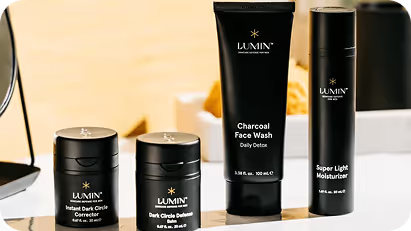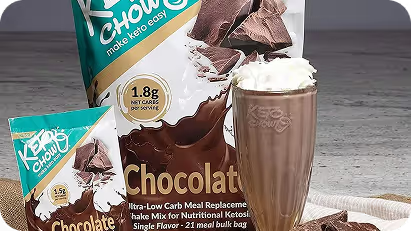TikTok eCommerce: A Complete Guide
Social media has been a game changer for ecommerce, enabling businesses to connect with their customers and sell directly on their pages. The rise of social media has shaved how we communicate, buy and market products today.
The Rise of Social Media
Social media began gaining traction in the early 2000s, evolving from simple networking websites to platforms that support different forms of communication and content sharing. Initially we saw social networking sites like Six Degrees (1997), Friendster (2002)and Myspace (2003), but it was Facebook (2004) that truly transformed social media of what it is today.
The increase in social media website usage coincided with the increase of smartphones and internet availability. The 2010s saw the explosion of social media platforms and apps on mobile phones. Instagram (2010) introduced photo sharing, with its focus on visual content, filters, and later stories. Snapchat (2011) capitalized disappearing messages focusing on a casual communication and content sharing.
As the social media space evolved, the diversification of niche platforms increased. Pinterest (2010) emphasised on discovery through images while Reddit grew as a hub for discussion and communities.
Social media continues to evolve with new platforms like Clubhouse ( audio-based social networking app) and Bereal (authenticity). Platforms like Instagram, TikTok, and Twitter are increasingly integrating shopping, AR experiences, and advanced AI-driven personalization into their features.

History of TikTok
Douyin which was later named TikTok was launched in 2016 in China by Bytedance. It was designed to allow users to create short-term videos often on trending music. TikTok’s user friendly interface with the “For You” recommendation section was a hit among teenagers and young adults.
TikTok’s merger with Music.ly expanded TikTok’s international presence and becoming the most downloaded app in US by 2018. TikTok’s algorithm thrives on challenges, memes and trends, TikTok became a cultural hub, with songs, products, and creators gaining instant popularity through the platform.
The rise of TikTok eCommerce
Following the lead of other social media platforms like Instagram and Facebook, TikTok has introduced the ability to sell products directly to the customers via the app. Brands from various industries, including fashion, beauty, food and electronics have found a new medium to market their products and enhance brand awareness among the population.
TikTok’s feature TikTok Shop is available to brands with TikTok business ad accounts, thuis feature allows customers to browse the products inside the app without leaving the platform, enabling eCommerce brands display their product in a integrated online store, making shopping more convenient for users.

As TikTok continues to enhance its eCommerce features, it is poised to transform the way people experience online shopping and digital commerce.
The key features of the TikTok shop includes:
- In feed video and Live shopping: Creators, Influencers or eCommerce brands can tag products in their tiktoks and livestreams, making them shoppable and easily discoverable within the ForYou page.
- Product Showcase: Brands can showcase their products on their profile pages, creating collections for users to explore and shop. Shoppers can review product details, read reviews and make product purchase directly from the app.
- Shop Tab: This sections offers a searchable interface including product descriptions, listings and shoppable content.
- Affiliate Program: Creators can earn commissions by promoting and driving sales for participating brands through TikTok’s Affiliate Program.

Why should eCommerce brands focus on TikTok eCommerce?
By leveraging TikTok shop brands can go viral almost instantly, and gain exposure and potential to drive huge traffic to their eCommerce sites.
With GenZ and millennials driving high levels of impulse buying, TikTok integrated social shopping into its platform. According to the eMarketer report, in 2021, 47% of TikTok users reported purchasing something they saw on the app, while 39% discovered a product or brand they were previously unfamiliar with.
Boost Brand Awareness and Visibility
TikTok eCommerce provides a great opportunity for brands to enhance brand awareness and reach a wider audience by crafting engaging content and giving the audience to shop right from the app. TikTok’s algorithm favours content that captures attention and resonates with the audience, meaning businesses can achieve significant reach and exposure on the For You page increasing the chances of getting more sales from your TikTok eCommerce store.
Increased Sales and Revenue
By creating content that is trending on TikTok, brands have the potential to go viral, creating millions of views and attracting a large audience and following. TikTok’s advertising platform can help brands target specific audiences, optimize campaigns and track ad performance.
Reaching Younger Audience
TikTok is suitable for reaching younger audiences, with most users falling between the ages of 18 and 34 making it easy for brands to reach and grab the attention of the younger audience. TikTok’s short-form video format allows brands to showcase their brand personality and strengthen brand loyalty in this process.
Shopify Partnership with TikTok
Following the steps of Facebook shop and Instagram shopping, TikTok launched TikTok business in 2020, allowing brands to integrate their eCommerce store with the platform.
Now, with Shopify’s partnership with TikTok, brands can seamlessly connect their Shopify stores to the platform, This integration allows for organic product discovery, where TikTok users can directly purchase products from Shopify stores through TikTok videos and profiles.
This collaboration taps into the trends of TikTok commerce and viral content-driven sales, encouraging shopify brands to invest in a dynamic new avenue to boost sales and engage with customers.

How to Setup TikTok Shop?
Here’s a step-by-step guide on how to start selling on TikTok eCommerce.
- Register your brand with a TikTok business account. If you already have one, simply login.
- Open TikTok seller section and configure details like your warehouse or pickup locations, contact, and return information.
- In the Seller Centre, verify your business by uploading necessary documents related to your business registration, ownership, and other requirements, and then submit for approval.
- Wait for your review, you may be asked for additional documents. Once approved, you’re set to proceed.
- Link your bank account to your TikTok Shop, you may need it for your sales transactions.
- List your products by setting up Shop Ads in the Seller Center, create a campaign in the TikTok Ads Manager, selecting 'Product Sales' as your objective and TikTok Shop as the product source, and then launch your ads.
- From your Shopify admin, click Settings > Apps and sales channels.
- From the Apps and sales channels pages, click Shopify App Store.
- If applicable, then log in to continue to the Shopify App Store.
- From the Shopify App Store, search for TikTok to learn more about the sales channel.
- Click Add channel.
- On the Set up TikTok Shop page, in the TikTok Shop section, click Connect.
- In the Sign Up dialog, do either of the following:some text
- If you already have a TikTok for Business account, then click Log in.
- To register as a merchant on TikTok, fill in the Phone number, Email, and Password fields, and then click Register as a merchant.
- On the Connect to Shopify? Dialog, review the TikTok Shop Merchant Terms of Service, and then click Connect.
- In the Shop information section, click Verify to verify your shop information.
- In the Upload Documents dialog, complete the required fields, and then click Next.
- Click Finish setup.
TikTok eCommerce: How to boost your brand?
TikTok is distinct for its dance trends and viral challenges. TikTok has become a powerful marketing tool for dtc brands. TikTok usually requires a strategy different from that of other social media platforms today. Let’s explore some key tactics you can use to boost your brand on TikTok.
1. Understand Your Audience and the Platform
Before you can effectively boost your brand on TikTok, it’s essential to understand the platform and the people who use it. TikTok is popular among younger audiences and it’s slowly gaining traction among millennials as well, making it a diverse and vibrant platform.
TikTok promotes content that is creative, authentic and fast-paced. Hence, short-form content works really well on TikTok. To boost your brand, your content must align with TikTok’s algorithm which promotes creativity, humour, short-form content.
2. Leverage Trends and Hashtags
TikTok is driven by trends, whether it’s dance challenges or a video with trending sound, staying on top of what’s trending is crucial to succeed on TikTok.
Check the “Discover” page to see which hashtags or trends are gaining momentum. Create a content strategy to fit your products and brand into these trends.
For example, if you run a fitness brand, you could participate in a challenge centered around physical activity or wellness.
Also, you can also create your own challenge or hashtag, encouraging your followers to participate or engage. #InMyDenim is an excellent example of brand-specific challenges that could encourage users to participate, generating massive brand awareness. By creating a challenge and pairing it with a branded hashtag, you could encourage user-generated content that not only deepens your engagement with your followers but also boosts your reach.
3. Partner with Influencers
Influencer marketing is one of the most effective strategies for boosting your brand on TikTok. TikTok can help you introduce your brand to their followers in an authentic and engaging way.
However, choosing an influencer can be a tough task. It’s important to choose whose audience aligns with your brand and target audience. A creative, authentic collaboration with the right influencer can put your brand in front of thousands of potential customers.
4. Focus on authentic, Creative Content
People on TikTok are quick to spot content that feels too sales-driven or forced so it is important to focus on creating content that feels organic and real. Therefore, User-generated content that looks casual, fun, and spontaneous often performs better on TikTok.
TikTok’s various effects, filters and editing tools make your videos very engaging. Behind-the-scenes, content, tutorials or user-generated content featuring your products are effective content ideas.
5. Use TikTok Ads
If you are looking to grow quickly on TikTok, Ads could be a powerful tool. TikTok offers several ads formats, including:
- In-Feed Ads: These ads appear on the FYP as users scroll through their feed and feel like native content.
- Branded Hashtag Challenges: These allow brands to sponsor a challenge that encourages users to participate and create content around your brand.
- TopView Ads: These ads appear as soon as the user opens the app and provide significant visibility.
Paid advertising on TikTok can be highly targeted based on location, interests, and behaviours, ensuring that your ads reach the right audience.
Summing Up
TikTok eCommerce offers a unique opportunity for brands to boost sales by reaching new customers and increasing their brand awareness and visibility. By creating engaging content, leveraging trends, investing in TikTok ads, and partnering with influencers, businesses can
Grow their brand on TikTok.
Table of contents























.png)







.png)





.png)



































